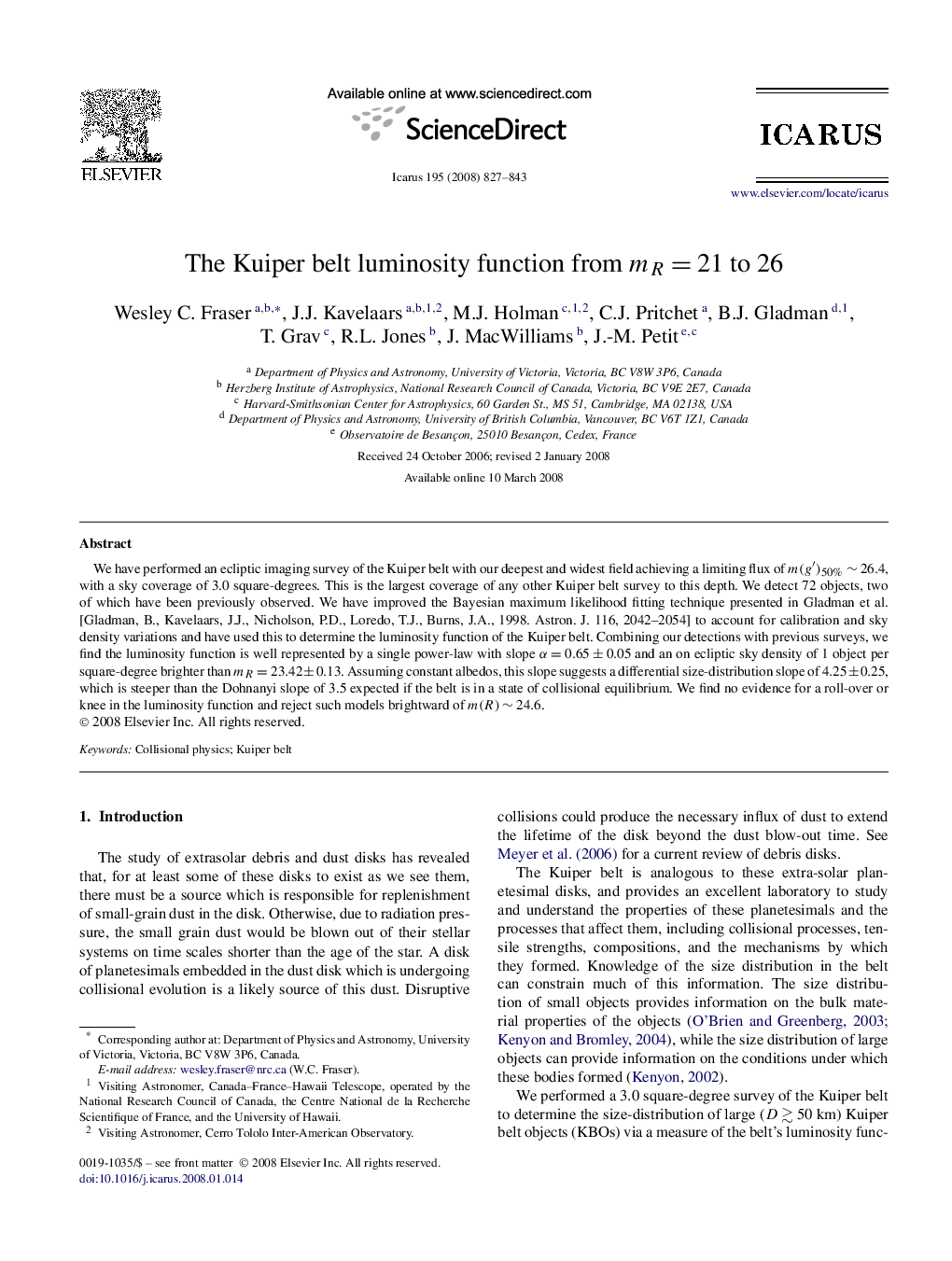| Article ID | Journal | Published Year | Pages | File Type |
|---|---|---|---|---|
| 1774976 | Icarus | 2008 | 17 Pages |
Abstract
We have performed an ecliptic imaging survey of the Kuiper belt with our deepest and widest field achieving a limiting flux of m(gâ²)50%â¼26.4, with a sky coverage of 3.0 square-degrees. This is the largest coverage of any other Kuiper belt survey to this depth. We detect 72 objects, two of which have been previously observed. We have improved the Bayesian maximum likelihood fitting technique presented in Gladman et al. [Gladman, B., Kavelaars, J.J., Nicholson, P.D., Loredo, T.J., Burns, J.A., 1998. Astron. J. 116, 2042-2054] to account for calibration and sky density variations and have used this to determine the luminosity function of the Kuiper belt. Combining our detections with previous surveys, we find the luminosity function is well represented by a single power-law with slope α=0.65±0.05 and an on ecliptic sky density of 1 object per square-degree brighter than mR=23.42±0.13. Assuming constant albedos, this slope suggests a differential size-distribution slope of 4.25±0.25, which is steeper than the Dohnanyi slope of 3.5 expected if the belt is in a state of collisional equilibrium. We find no evidence for a roll-over or knee in the luminosity function and reject such models brightward of m(R)â¼24.6.
Keywords
Related Topics
Physical Sciences and Engineering
Earth and Planetary Sciences
Space and Planetary Science
Authors
Wesley C. Fraser, J.J. Kavelaars, M.J. Holman, C.J. Pritchet, B.J. Gladman, T. Grav, R.L. Jones, J. MacWilliams, J.-M. Petit,
